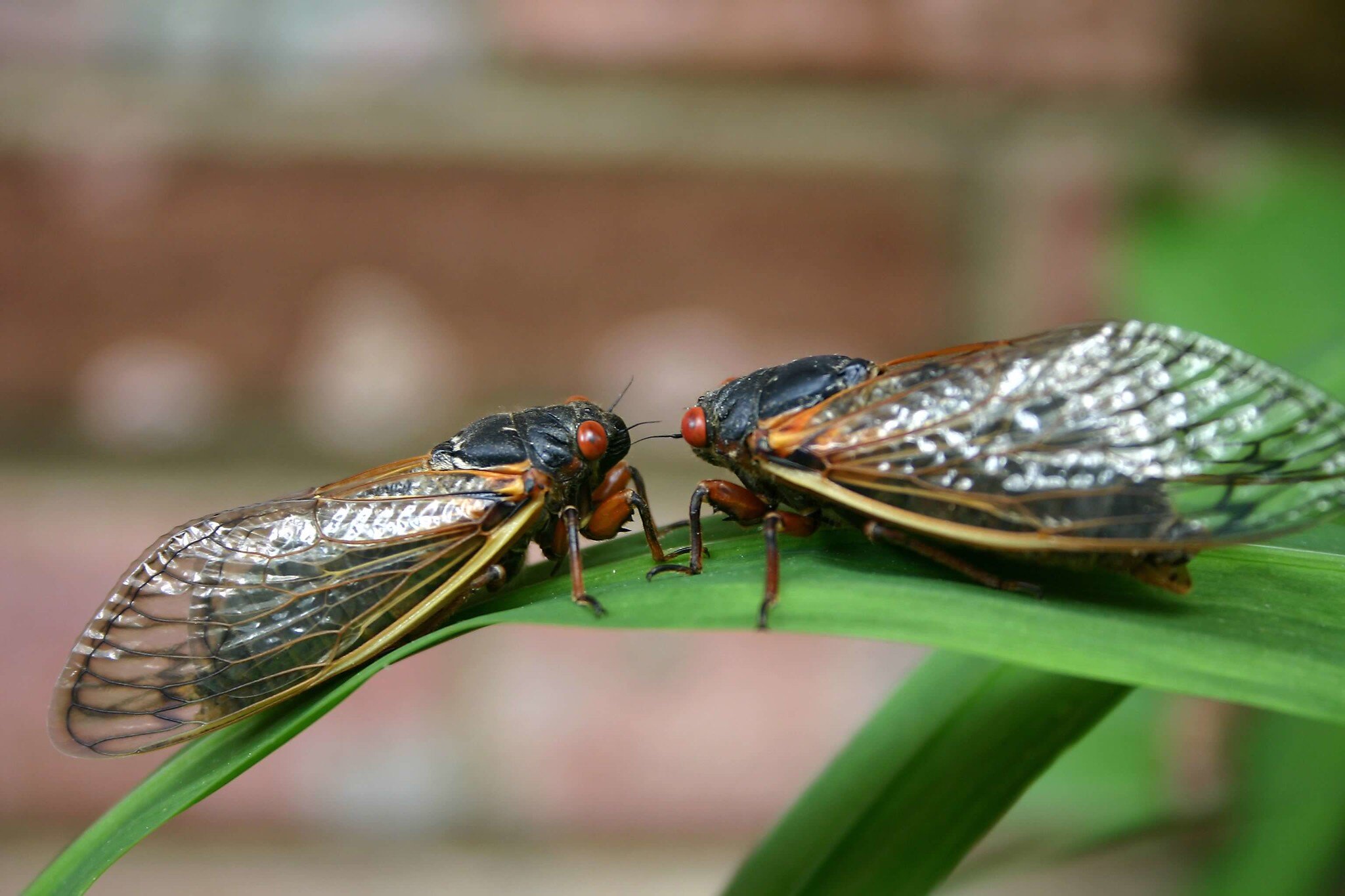PICTURED: Two of the 17-year “Brood X” cicadas, which are due to emerge this year. Photo credit: Tracy Lee CC 2.0.
Of the 3,000 species of cicadas on Earth, there are only a few that get mislabeled as locusts, because they emerge suddenly and swarm in such numbers as to conjure images of Biblical Egypt.
These are the 13 and 17-year cyclical species, that lie underground for long periods for reasons as-yet undetermined by scientists, before bursting forth from the forest floor in such enormous amounts of biomass that even if the forest was entirely turned to pasture for cattle, those grazers would not weigh as much as the cicadas.
As NPR puts it, the last time the famous “Brood X” (10, not x) cicada crop took to the wing under the sun, “John Kerry was running for president, Barack Obama was an obscure state senator, and Donald Trump was praising Democrats on CNN”.
Brood X emerges in forests and semi-forested areas in the eastern United States, Appalachian Mountains, eastern Mid-West, and Mid-Atlantic regions, covering about 15 states and the D. of C. When exactly they crawl out of the ground depends on the temperature at least, as well as other factors that aren’t confirmed.
For Americans looking for a the best places near them to see the cicadas, Cicadamania.com has all the details on where last year’s numbers were densest, and up to date information as they emerge.
PICTURED: A map of Brood 10, circ. 1919.
A strict timetable
Underground, they sustain themselves for 17 years by sucking tree sap. According to scientists speaking with Nat Geo, one of the prevailing theories on the 7 species of periodic cicadas and their emergence schedules is that in emerging for a few days in different times, they avoid the potential for cross breeding and hybridization.
Hybridization would result in a breaking of these prime number schedules, leading to the overall survival strategy losing effectiveness. Imagine if a group of 13 and 17 year cicadas bred and came out in between, on a 15 year timeline, there wouldn’t be many of them, it would be difficult to find a mate and there’d be much less herd protection.
Another theory is that the timing is to avoid predators, as with virtually no natural defenses of any kind, anything with a mouth, from snakes to brown bears, can easily catch their fill of cicadas. In fact the only thing they can do to avoid being eaten is to make as much noise as they can, a common defense among insects and amphibians, as the mass of sound fools a hungry predator’s ears as they try to isolate a single chirping insect for dinner.
However with the gap in between emergences, there is virtually no way to test any of these theories accurately.
The next time this group of cicadas will come around would be 2038, and considering how limited many Americans’ contact with nature has been over the past year, there could be no better time for one of nature’s great migrations to occur.




